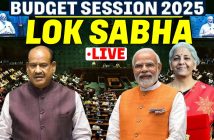India Adopts Trading of Carbon Credits
By polluting the oceans, not mitigating CO2 emissions and destroying our biodiversity, we are killing our planet. Let us face it; there is no planet B.” Emmanuel Macron, President of France.
Carbon trading is the process of buying and selling permits that allow the industry to emit carbon dioxide. The European Union Emissions Trading System (EU ETS) is the world’s most extensive carbon trading system. Countries like Brazil and China pursue this carbon trading to tackle rising emissions. India is also establishing its Carbon Trading markets on the European model.
How do carbon trading permits work?
Carbon credits are certificates that represent quantities of greenhouse gases that have been kept out of the air or removed from it. One carbon credit certifies that one metric tonne of carbon dioxide goes away from the atmosphere. Advancements in remote sensing data and AI have enabled carbon-level prediction through satellite data which serves as one of the methods through which carbon credits quantify. Companies and governments purchase carbon credits to meet their climate commitments.
All current carbon trading schemes use a cap-and-trade model. Under the plan, the government sets a legal limit on emissions over a specific period. It grants a fixed number of licenses to those releasing the emissions. A polluter must hold enough licenses to cover the emissions it releases. Each license or permit equals one tonne of carbon dioxide comparable (CO2e). Permits are sold – usually by auction – so that from the outset, polluters are charged a price on their emissions and incentivised to reduce to a bare minimum the permits they seek.
Polluters buy carbon from countries or industries outside the cap, usually in the developing world. Their purchase allows the emitter to exceed the emissions cap by paying someone else somewhere else to reduce their emissions instead. Carbon trading is criticised because carbon dioxide emissions in industrialised countries are not declining at the necessary rate to avert catastrophic climate change. It is a fact that offsets do not reduce emissions; they merely replace them. Many scientists, economists and NGOs believe carbon trading is a distraction from the need to end fossil fuel use and move to a low-carbon future. Carbon trading is an easy way to reduce environmental harm despite the inherent flaws in pollution trading.
India Story
India has planned to operationalise the Carbon Trading market in 2026, covering 37% of the country’s emissions. The government intends to publish the market’s rules soon. The Indian market would cover carbon dioxide emissions and five other greenhouse gases valued in terms of their carbon dioxide equivalence. The Central Electricity Regulatory Commission is the market regulator. Participation would be obligatory for entities in sectors such as oil refining, steel, aluminium and cement.
If a stabilisation mechanism exists, the World Bank has shown interest in financing the carbon market. The bank extended an $8 million grant to India in 2016/17. India is creating a stabilisation fund to keep credit prices in its carbon market above a certain threshold, ensuring that they remain attractive for investors and that the market succeeds in cutting emissions. The market regulator would use money in the fund to buy carbon credits if prices fell too low. Consistent investor interest in recognition and a floor under the cost deters sharp falls in the market and could discourage industries from reducing carbon dioxide emissions. The committees of the environment, power and renewable energy ministries set the targets for lowering each sector’s emissions.
India has committed to cutting greenhouse emissions to the gross domestic product by 2030 to 45% of its 2005 level and net zero by 2070.
Between 2010 and June 2022, India issued 35.94 million carbon credits or nearly 17% of all voluntary carbon market credits given globally. The market for carbon credits increased by 164% globally in 2021. The Energy Conservation (Amendment) Bill, 2022, passed in the Lok Sabha on August 8, incorporated the aim of developing the domestic carbon market.
In the European Union, a credit worth 1 tonne of carbon dioxide traded at just 5 euros in 2012, down from around 30 euros in 2008, so cutting emissions could have been more rewarding. But the creation of a market stability reserve in 2019 has seen the price rise to between 75 and 95 euros per tonne. Indian market shall soon formalise the pricing.
India’s carbon market is evolving in two phases. In the first phase, between 2023 and 2025, the existing energy-savings certificates will be converted to carbon credits. India already has a market for trading certificates in above-target energy savings. The new market will subsume in which certificates for renewable energy generation trade.
Besides helping the renewable energy industry, carbon trading can also benefit the country’s farmers. Approximately 55 per cent of India’s population is in agriculture. Given its dependence on natural resources such as soil and water, agriculture is significantly impacted by the climate crisis, including land degradation, market volatility in prices, and rising input costs. The turbulence affects the sustainability of agricultural production and the livelihoods of farmers. The intensive application of fertilisers and pesticides has depleted soil carbon levels and degraded the soil. Soil comprises organic matter with carbon, nitrogen, and phosphorus elements. Approximately 50 per cent of soil organic matter is carbon.
The soil carbon measurement provides an accurate indication of overall soil health. Carbon sequestration increases soil carbon levels and reduces carbon dioxide levels, a dual benefit to climate change and agriculture. A farmer who sequesters one carbon credit can earn INR 780 at current market prices; large corporations provide as high as INR 2,000 when purchasing large chunks of carbon credits directly.
Establishing the Carbon Trading Market shall be an inclusive effort to make India carbon neutral in becoming a $ 5.0 trillion economy by 2027.
Rightly said, “You will die, but the carbon will not; its career does not end with you. Better trade it off for a safe living.”
About the author:

Mr. Hargovind Sachdev is an Ex-Banker, GM(Retd) of State Bank of India. Has over 39 years of experience in banking, having occupied senior positions in UCO Bank, United Bank of India,State Bank of Patiala, State Bank of Travancore & State Bank of India where he headed the Central European Credit Desk at Frankfurt,Germany from 2006 to 2011 covering 15 countries of Central Europe. Has undergone International Banking Training from Asian Institute of Management, Manila, Philippines in the Year 2003 and a Multi-currency lending-technique training at the Euro Money Institute, London in 2009.
He has specialisation in Credit, Foreign Exchange,Vigilance, Monitoring & appraisal of Corporate Loans, MSME Credit,Gold Loans, Agricultural Loans & NRI Business Management in assets & liabilities. As a Forensic Auditor, he has conducted various Transaction Audits allotted by Banks.
He was felicitated by the Central Vigilance Commissioner , Sh. C.V Chowdhry for winning first prize for best article on Preventive Vigilance in 2015. He is also an accomplished Public Speaker having conducted multiple Motivational Seminars for institutions like ONGC, National Housing Bank & Bank of Baroda. He is an Independent Director & consultant to various big entities in the corporate sector at present.




